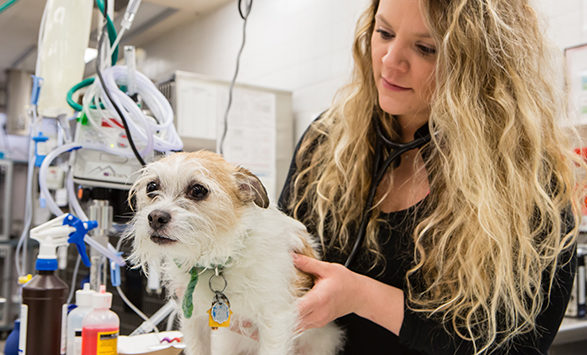High Rise Syndrome in Cats

Background
While cats are famous for their ability to land on their feet, the reality is they don’t always stick their landing. High rise syndrome refers to the common set of injuries that cats may sustain when they fall from high places. This condition is seen more often in warmer weather, but high rise syndrome can occur anytime a window or balcony door is left open.
Cats love to sit on windowsills and watch the birds fly by. If a window is open too wide or if they push on a loose screen, they can fall out. Cats might also fall if they are startled by a vacuum or other loud noise.
In the 1980s, the Animal Medical Center became the first to report on high rise syndrome when, over the course of five months, AMC treated 132 cats who had fallen from buildings. Although 90 percent of the cats survived, many of the cats sustained serious injuries, including chest trauma, head/facial injuries, and limb fractures.
Risk Factors
Cats who live in apartments with balconies or unscreened windows are most at risk, but cats also may be injured falling from a second floor landing.
Many owners believe their cat won’t fall, or if she does, she will land safely on her feet. While a cat’s “righting reflex” allows her to twist her body and land on her feet most of the time, she still may get hurt.
Kittens and young cats are more prone to falls due to their inexperience and curiosity. Older or less agile cats may suffer more injuries if they’re not able to reposition themselves in time, or if their legs are too weak to absorb the shock of the fall.
Signs
If your cat falls from any significant height, take her immediately to a veterinary ER. There are a number of serious injuries she may have sustained that might not be obvious to you. The sooner your cat can be evaluated and treated, the better the chance of a full recovery.
Diagnosis
A cat who has fallen may be in shock and require fluids, oxygen, and pain relief. The emergency veterinarian will conduct a full examination and may order x-rays, an ultrasound, or other tests to evaluate your cat’s condition. Although many different injuries are possible, the most common include:
- Chest and lung injuries
- Head and facial injuries
- Limb fractures
- Abdominal organ injuries/bleeding
The injuries depend on how far a cat falls and in which position and on what surface she lands. The fall needs to be high enough to allow the cat to twist, but not too high that it causes traumatic injury.
Treatment
Treatment depends upon the injuries suffered, but typically includes oxygen for chest trauma, surgery for abdominal injuries or broken bones, and dental work for fractured jaws or teeth.
Prevention
Fortunately, high rise syndrome is preventable. Take the following steps to keep your cat safe:
- Keep window screens tightly in place
- Close windows if you don’t have screens
- Keep pets off open balconies
- Don’t feed birds on your balcony
- Keep balcony doors tightly shut at all times
- Consider a screened enclosure “catio” to give your cat a safe space to play
Make an Appointment































